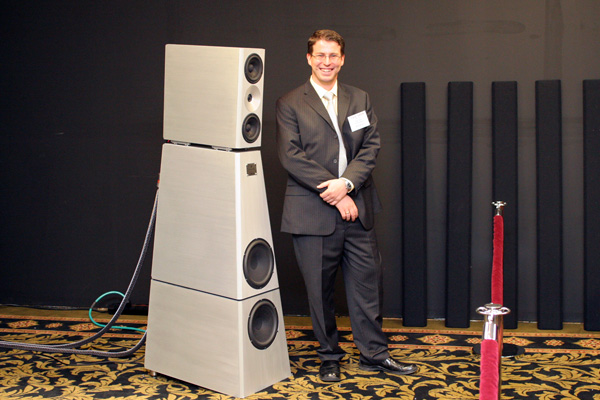ici les commentaires sur le blog d'un magasin américain (fan de kharma, audionote et ce genre de son particulier) :
http://www.yg-acoustics.com/YG_Acoustic ... ochure.pdf
The claim to fame for these speakers is their reported accuracy in frequency response: +/- 0.7dB. Sure sounded accurate to me.
Listening was an interesting experience here. The flat frequency response allowed part of my brain to relax while listening, a part which does not usually get to relax. Yes, our Marten Design Coltranes are a reported +/- 2dB - but there was an apparent audible improvement heard here. The musical passages of the Rachmaninov flowed better from one to the other, each being of a more appropriate, more real, loudness with respect to what came before and after. This is the good news - and the advantages of a really flat frequency response is something I think we will both attribute more importance to whenever we audition a loudspeaker in the future.
A cautionary note: specifications usually, including those for this speaker, list a frequency response without detailing at what SPL the response was measured at. As an obvious example of how misleading this is, the response may be flat to 20Hz at 1 watt, but at 10 watts it may be down 8dB at 20Hz. Another specification qualification that is missing is what kind of frequency wave was used - was it a pulse or a smooth sweep?
What is missing in these specifications is also a consistency of frequency response dynamics - which has at least three dimensions:
1. Consistency: For say, one watt, does the shape of the response to a pulse at, say, 30Hz match the shape of the response to one at say 5000Hz.
2. Accuracy: how closely does the shape of the response to a pulse match the shape of the response itself
3. Dynamics: How consistent are #1 and #2 at different wattages? [We talk about this in general terms as how well a speaker handles micro-dynamics, midi-dynamics, and macro-dynamics]
The construction of these speakers out of what looks to be aluminum also seemed to minimize cabinet colorations. Most high-end loudspeaker manufacturers are getting pretty good at this these days.
OK, the bad news. There was a real lack of separation between the notes here. They all kind of blended into each other. No doubt part of the cause of this is the low efficiency of the midrange / tweeter assembly (a reported 85dB). This assembly is the box at the top of the speaker. It is being bi-amped by a 800 watts/channel stereo amplifier.
The subwoofer, the largest part of the speaker, is self-powered. There was some disconnect between the bass and the midrange. There was also a severe lack of transparency and imaging - there was no way either if us were able to convince ourselves that there was a real piano between the speakers somewhere.
My guess would be that in constructing the crossover so that the flat frequency response was achievable, they not only reduced the efficiency of the speaker quite a bit, but comprised some of the other aspects of frequency response, as described by the 3 points above.
Anyway, a mixed bag. These speakers are very popular in Japan.
---------------------
L'adresse du blog : (et des photos suplémentaires)
http://www.audiofederation.com/hifiing/ ... /index.htm









